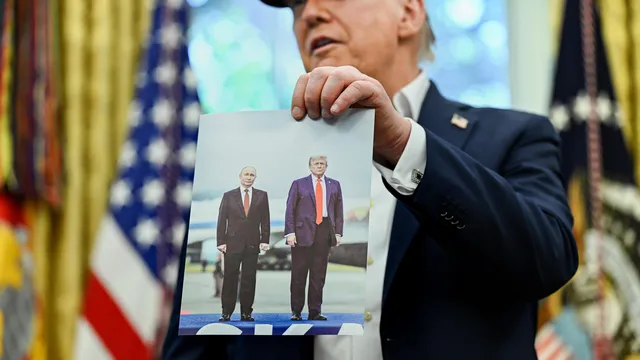Chinese leaders sense a historic opportunity, reported The Economist. The inconsistent trade policy of President Donald Trump, massive budget deficits, and threats to the independence of the Federal Reserve seriously risk weakening the dollar. Since January, the U.S. currency has fallen by 7% against a trade-weighted index, marking its worst start to a year since 1973. By contrast, the strictly controlled Chinese currency — the yuan — has reached its highest level since Trump was re-elected in November. Foreign investors are pouring into the market, joined by many governments. Just this month, leaders from ten countries, including India and Russia, agreed to settle a larger share of their trade in local currencies.
Such initiatives are not new, nor is China’s ambition to internationalize the yuan. The first attempt began in 2009, when the country loosened some capital restrictions. But in 2015, a stock market crash and a currency devaluation triggered massive capital flight, leading to new restrictions and halting the yuan’s rise. Now, however, the authorities are determined to make progress lasting and to maintain tighter control over capital flows.
Chinese leaders believe that a globally accepted yuan could shield exporters from fluctuations in the dollar’s value and blunt the impact of U.S. financial sanctions. Some officials even hope that foreign companies and investors will view strict state control not as an obstacle but as an advantage. In recent years, China has achieved surprising successes: the yuan’s share in international invoicing and offshore lending has grown, as has the creation of financial mechanisms outside the dollar system. But to boost yuan usage further, new incentives are needed for foreigners to hold and trade assets in the currency.
Even so, the yuan still lags far behind. Although China accounts for nearly one-fifth of the global economy, its currency is used in only 4% of international payments by value, compared with 50% for the dollar. Yuan-denominated assets make up just 2% of central banks’ foreign exchange reserves, versus 58% for dollar holdings. Capital controls are the main reason for this imbalance, with many economists arguing that the yuan’s internationalization is impossible as long as these barriers exist.
History, however, suggests otherwise. Even after the United States became the world’s largest economy, it took decades for the dollar to dominate. Compared with that timeline, China is advancing remarkably quickly. The yuan’s share in international payments has doubled since 2022, thanks mostly to domestic changes. Today, over 30% of the country’s external trade is conducted in its own currency — up from 14% in 2019. More than half of all China’s cross-border transactions, including financial flows, are now in yuan, whereas in 2010 the share was below 1%.
The ultimate goal, explains Dinny McMahon of the consultancy Trivium China, is to create a stable circulation of the yuan both inside and outside the country, facilitating foreign access and encouraging the use of the offshore yuan. In May, regulators required major banks to conduct at least 40% of their trade finance lending in yuan. To expand usage, Chinese authorities are offering yuan-denominated obligations to their partners. A study by the U.S. Federal Reserve showed that after sanctions against Russia in 2022, Chinese banks almost completely shifted their new offshore lending from dollars to yuan, tripling the volume of outstanding debt in the Chinese currency.
In parallel, Beijing is building a global safety net. Since the start of the internationalization campaign, China has provided 4.5 trillion yuan (about $630 billion) in currency swaps to 32 central banks — a scale comparable to that of the IMF. While actual use of these swap lines has been limited, they guarantee liquidity access in a crisis and strengthen confidence in the yuan.
China is also modernizing its own financial infrastructure, enabling transactions outside the dollar system. This includes the digital yuan, payments via mobile applications, and most notably the CIPS system, an alternative to the Western SWIFT. Already, more than 1,700 banks worldwide have joined CIPS, and transaction volume in 2024 jumped 43% to 175 trillion yuan ($24 trillion). Clearing banks for yuan payments operate in 33 markets, including new hubs in Turkey and Mauritius.
Alongside this, the mBridge digital payments platform, created jointly with other central banks, is also developing. Although volumes remain small, U.S. officials already describe it as geopolitically significant. Chinese regulators are encouraging banks to use it, including for transactions by companies targeted by sanctions.
New steps are on the horizon. Xi Jinping’s self-sufficiency-oriented regime is expanding foreign access to domestic financial markets. The number of financial instruments available for international trading has doubled this year alone. Falling interest rates and deflation have pushed borrowing costs on offshore markets below 2% — their lowest level since 2013. Companies, including foreign ones, are on track to issue record amounts of so-called “dim sum” bonds in yuan.
In July, Hungary issued “panda bonds” worth about 5 billion yuan — the largest sovereign issue in Chinese currency to date. On September 8, the Financial Times reported that Russian energy companies had received the green light to issue yuan-denominated bonds. Kenya is considering converting its debts to China from dollars into yuan, while Brazil is preparing a new issuance.
Despite the growing interest, Chinese authorities are acting with a long-term perspective. In June, Pan Gongsheng, Governor of the People’s Bank of China, stated that the global financial system is becoming “multipolar” and that the dollar will be forced to compete with other currencies, including the yuan. Beijing hopes this will reduce the country’s dependence on the dollar without requiring significant liberalization of capital flows and the exchange rate. The yuan may well become a global currency — but with Chinese characteristics. | BGNES

 Breaking news
Breaking news
 Europe
Europe
 Bulgaria
Bulgaria







